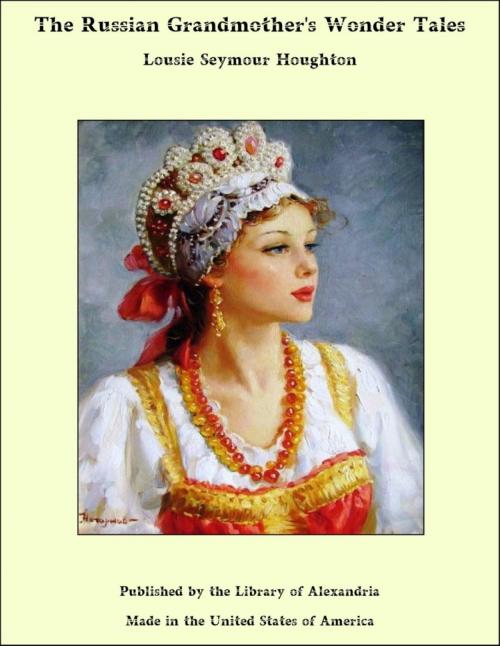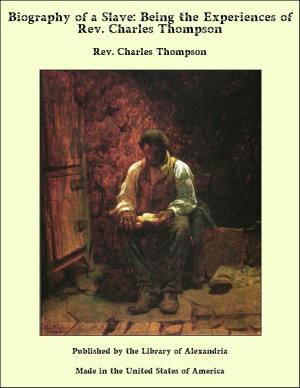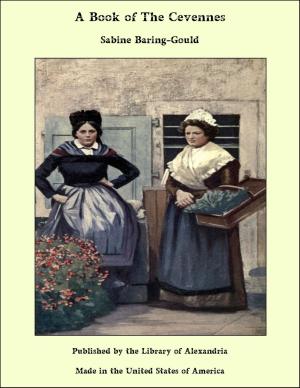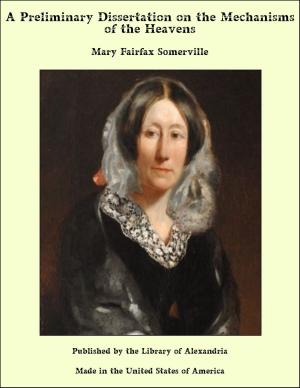The Russian Grandmother's Wonder Tales
Nonfiction, Religion & Spirituality, New Age, History, Fiction & Literature| Author: | Lousie Seymour Houghton | ISBN: | 9781465584526 |
| Publisher: | Library of Alexandria | Publication: | March 8, 2015 |
| Imprint: | Language: | English |
| Author: | Lousie Seymour Houghton |
| ISBN: | 9781465584526 |
| Publisher: | Library of Alexandria |
| Publication: | March 8, 2015 |
| Imprint: | |
| Language: | English |
The stories which the Russian grandmother told will be found, with many others, in a German collection of “Tales and Legends of South Slavonia,” put forth in Vienna some twenty years ago by Dr. Friedrich Kraus, an ardent student of folk-lore. I have sketched in a slight background of peasant village life as it still exists in some parts of Southern Russia, because this is the proper setting of these stories; and I have been careful to clothe them as nearly as I might in the simple language in which they are told to-day by many a village fireside in South Slavonia. I frankly confess to having received from Mr. Joel Chandler Harris the suggestion which I have thus carried out. It was an unerring literary instinct which impelled him to put upon the lips of Uncle Remus and in the environment of a Southern country home of half a century ago the stories which he had found among the colored people of the South. Folk-tales, of whatever character, speak the more directly home to the hearts of children, whatever their own intellectual environment, in proportion as their setting is most nearly that which naturally belongs to them. Just as the highest value of the Homeric poems is their revelation of the heart of man, showing that in all ages and under all conditions heart answers to heart as face answers to face in water, so the folk-tales of all peoples in their native form have a higher function than simply to amuse, a higher than mere literary value; they are the child’s best introduction to the study of human nature. The children will not be the less interested in the stories which the Russian grandmother told to the little peasant boy if they discover in her wonder-tales some analogies with stories that they already know. The adventures ofMaster Reinecke and Mrs. Petz, of Isegrim and Lampe, will surely remind them of the Uncle Remus tales; they will find some suggestion of Kamer-es-zaman and the Princess Budoor in the story of “The Beg and the Fox,” a hint of the “City of Brass,” in that of “The Vila in Muhlenberg,” a faint reflection of the “Arabian Nights” story of theFisherman in the tale of the “Three Eels,” and they will be especially pleased to recognize their old friend—andSindbad the Sailor’s—the roc, in the bird Kumrikusha. The transformations which are so enchanting a feature of the “Arabian Nights” are here suggested in the story of “Steelpacha,” while the dress of feathers, most universal of folk-fancies, found among every people in the world, and most perfectly developed in the Arabian “Story of Hassan of Bassora,” here appears in the tale of “The Golden Apple-tree and the Nine Pea-hens.”
The stories which the Russian grandmother told will be found, with many others, in a German collection of “Tales and Legends of South Slavonia,” put forth in Vienna some twenty years ago by Dr. Friedrich Kraus, an ardent student of folk-lore. I have sketched in a slight background of peasant village life as it still exists in some parts of Southern Russia, because this is the proper setting of these stories; and I have been careful to clothe them as nearly as I might in the simple language in which they are told to-day by many a village fireside in South Slavonia. I frankly confess to having received from Mr. Joel Chandler Harris the suggestion which I have thus carried out. It was an unerring literary instinct which impelled him to put upon the lips of Uncle Remus and in the environment of a Southern country home of half a century ago the stories which he had found among the colored people of the South. Folk-tales, of whatever character, speak the more directly home to the hearts of children, whatever their own intellectual environment, in proportion as their setting is most nearly that which naturally belongs to them. Just as the highest value of the Homeric poems is their revelation of the heart of man, showing that in all ages and under all conditions heart answers to heart as face answers to face in water, so the folk-tales of all peoples in their native form have a higher function than simply to amuse, a higher than mere literary value; they are the child’s best introduction to the study of human nature. The children will not be the less interested in the stories which the Russian grandmother told to the little peasant boy if they discover in her wonder-tales some analogies with stories that they already know. The adventures ofMaster Reinecke and Mrs. Petz, of Isegrim and Lampe, will surely remind them of the Uncle Remus tales; they will find some suggestion of Kamer-es-zaman and the Princess Budoor in the story of “The Beg and the Fox,” a hint of the “City of Brass,” in that of “The Vila in Muhlenberg,” a faint reflection of the “Arabian Nights” story of theFisherman in the tale of the “Three Eels,” and they will be especially pleased to recognize their old friend—andSindbad the Sailor’s—the roc, in the bird Kumrikusha. The transformations which are so enchanting a feature of the “Arabian Nights” are here suggested in the story of “Steelpacha,” while the dress of feathers, most universal of folk-fancies, found among every people in the world, and most perfectly developed in the Arabian “Story of Hassan of Bassora,” here appears in the tale of “The Golden Apple-tree and the Nine Pea-hens.”















